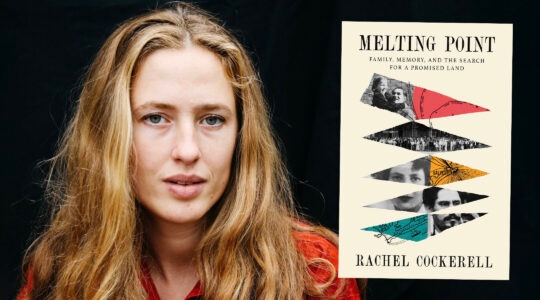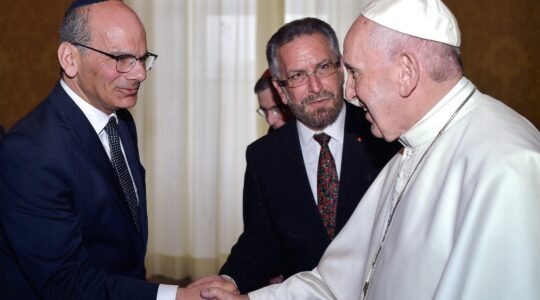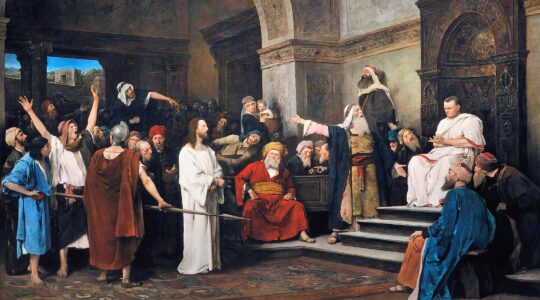The Conservative Movement is in crisis.
The United Synagogue of Conservative Judaism estimates that from 1985 to 2009, 175 affiliated congregations have dispersed or merged with other denominations. The movement’s branch of day schools, the Solomon Schechter schools, has had the sharpest enrollment decline out of any denominational schools with a 3.8 percent decrease from 2010 to 2011, and since 1998, 20 Conservative day schools have shut down nationwide.
Not only has the movement witnessed such decline, but also it has suffered from divisionwithin its membership. This winter, the cover of the Conservative Judaism Kolot Magazine depicted two female rabbis holding hands and wearing tefillin, aprovocative image that upset many traditionalists.
Some say that relaxing traditional standards and moving to the left is a viable solution for reinvigorating the Conservative Movement. However, this approach counters a pluralistic model in which there is a strong emphasis on keeping members of a community together.
Rabbi Abraham Joshua Heschel, the late, revered leader in the Movement, found assurance for pluralistic views in the diverging opinions of two famous sages, RabbiAkiva and Rabbi Ishmael, who disputed God’s immanence versus God’s transcendence.
Heschel viewed conflicting opinions as a conduit to extend our horizons and to reveal that contending interpretations can be woven together to offer an unbounded understanding of Divine truth.
As Rabbi Heschel did, we can turn to classical texts as motivation for constructing a pluralistic model.
Tractate Eiruvin’s “Eilu v’eilu divrei Elokim Chayim” (Eiruvin 13b), which translates as“ These and those are the words of the living God,” teaches that two opposing views can both be valid and complement each other. This declaration embodies the humbling notion that only recognizing one perspective leaves us with an incomplete picture.
Mishnah Eduyot’s opening chapter is another text that can offer insight into why we should foster pluralism. The famous source challenges why we still record minority opinions even though halachah is decided according to the majority opinion. The Mishnah answers “that if a court prefers the opinions of the minority position, it may rely on it,” emphasizing that minority opinions may become especially valuable in the future. Although it seems as if recently the Conservative Movement’s scale may have tipped, favoring the weight of change over that of tradition, these texts remind us of the necessity of integrating the views of traditional Conservative Jews into our thoughts and how we display our beliefs.
Rabbi David Wolpe of Sinai Temple in Los Angeles acknowledges that minority opinions of right-wing Conservative Jews are in some cases being dismissed.
“The egalitarian principle has become for many Conservative Jews a sort of defining principle,” he told me. “This is the way the spokespeople of Conservative Judaism define themselves, and they see those who oppose it more in the UTJ (Union of Traditional Judaism) camp, or Chovevei [Yeshivat Chovevei Torah), than in the Conservative movement. The right wing of Conservative Judaism, like the left wing of Orthodoxy, is increasingly squeezed, and Schechter is not the ritual model any longer.”
Rabbi Joel Roth, a professor of Talmud and Jewish Law at the JewishTheological Seminary and former chairman of the Rabbinical Assembly’sCommittee on Jewish Law and Standards, also recognizes the isolation of more traditional views.
“To say that being egalitarian is part of the definition of what it means to be Conservative does a disservice to the Conservative Movement, in my opinion, because it alienates many of those who have long considered themselves Conservative and makes them very uncomfortable because it intimates that they no longer have a place in the Movement,” he explained in an interview.
I believe pluralism should be more of a value within the Jewish community as a whole, not only in the Conservative Movement.
I grew up going to a pluralistic Jewish day school, I spent my summers in Conservative programs and my family and I belong to a Modern Orthodox synagogue. The intersection of these institutions has influenced my distinct — yet staunch — beliefs, making it impossible to label myself with one denomination, and I am not anxious to do so. I value the exposure I have to a broad range of religious ideologies and how it inculcates within me a sensitivity to pluralism and its challenges.
Although the concept of pluralism may be difficult to understand and actualize, if we overcome our doubts, with the help of classical texts, we can come away humbled with nuanced answers to our most critical questions. In the case of Conservative Judaism, this is especially relevant, considering there seems to be frequent neglect of the right side of the spectrum.
Before the scale tips even further, favoring the weight of change, perhaps it is necessary to remember our sages’ thoughts. If not, and the dearth of attention persists, the number of right-leaning Conservative Jews will become diminished and the balance within the movement will be lost.
Mia Appelbaum is a student at New York University.
The New York Jewish Week brings you the stories behind the headlines, keeping you connected to Jewish life in New York. Help sustain the reporting you trust by donating today.




